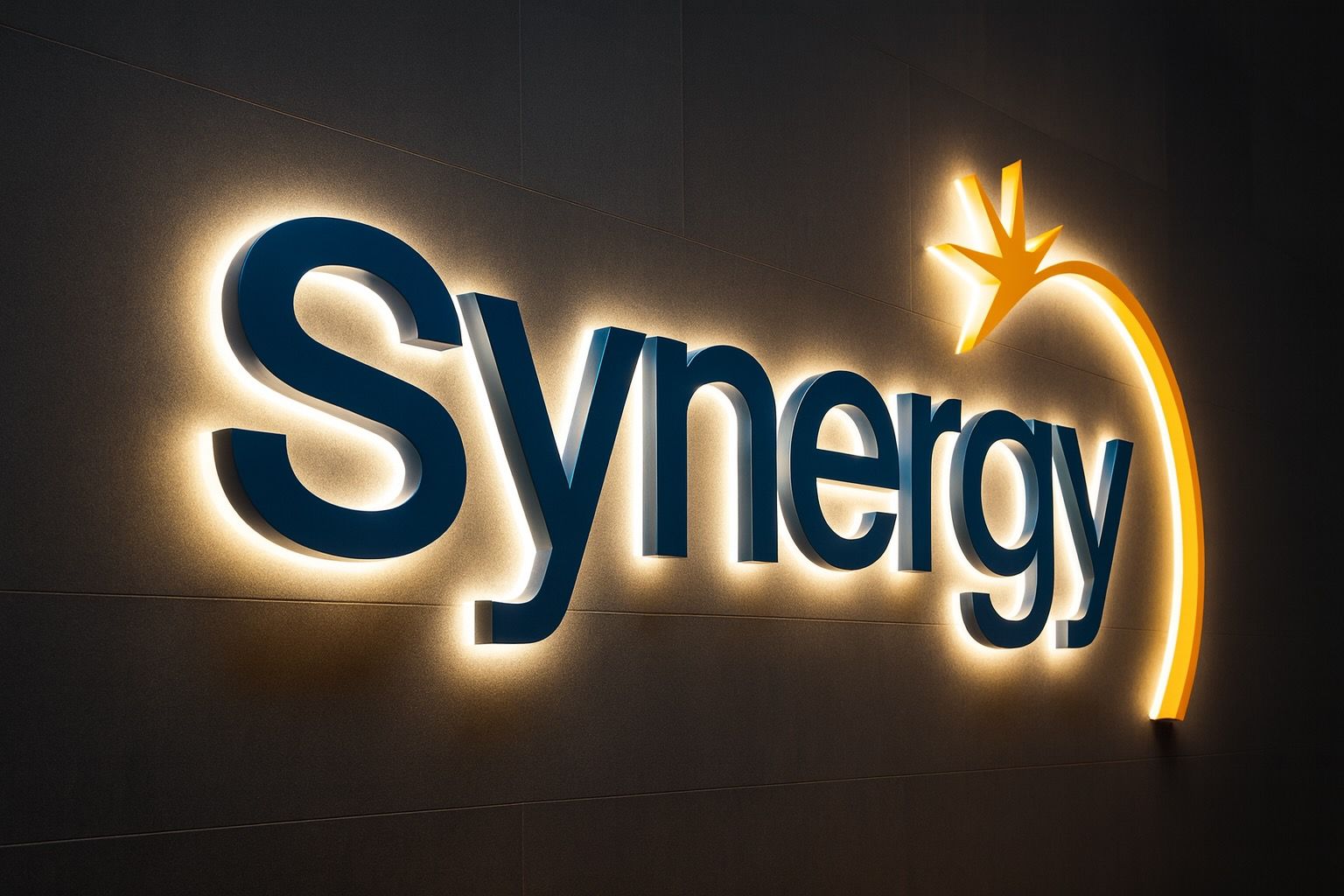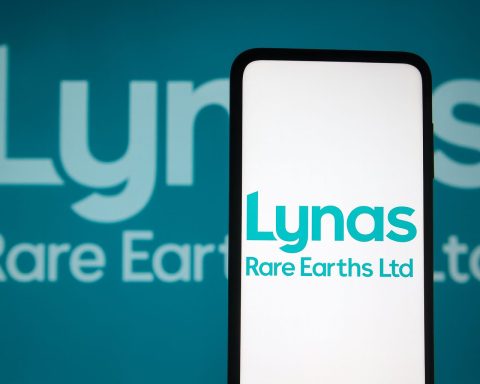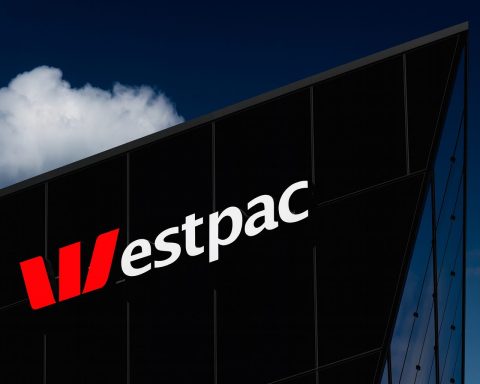- $40 Million Overcharged: Western Australia’s state-owned power retailer Synergy admits it overcharged ~174,000 customers a total of $40 million since 2009 due to a billing blunder [1]. Most overpayments were small (half under $100; average ~$230) but some reached thousands [2].
- Billing Bungle Explained: Payments were mistakenly accepted into closed accounts – essentially customers kept paying bills that no longer existed, because Synergy’s system didn’t stop or flag auto-payments after accounts were closed [3] [4]. This flaw persisted for 15+ years.
- Synergy Apologises & Promises Refunds: CEO Kurt Baker called the situation “not acceptable” and apologised for letting customers down [5]. All affected customers will be contacted and refunded (by cash or bill credit), but the process will take several months [6] [7].
- Government Reaction – “Unacceptable”: WA’s acting Energy Minister Simone McGurk said the state government learned of the full extent in late September and slammed the overcharging as “unacceptable” [8]. She said independent reviewers are working with Synergy to fix system weaknesses and prevent future overpayments [9].
- Public Trust Eroded: Opposition Shadow Energy Minister Steve Thomas warned that trust in Synergy is eroded, noting this is the second billing fiasco this year [10] [11]. He questioned “how on earth does a closed account accept payments?” calling it a “red light” issue that should never have been allowed [12].
- Not the First Overcharge Scandal: In July 2025, regulators revealed Synergy had overcharged ~2,845 vulnerable customers (on Centrelink benefits) $2.29 million by continuing to deduct payments via Centrepay after their accounts were closed [13] [14]. The Economic Regulation Authority (ERA) issued a breach notice as Synergy failed to notify those customers within 10 days of the overcharge, violating the code of conduct [15]. Due to rule changes, only 459 cases (owing $239,000) fell under enforceable remedies, but Synergy pledged to repay all affected customers back to 2009 [16] [17].
- History of Costly Errors: Synergy’s woes extend beyond billing. In 2023, it paid a $30 million settlement after the ERA found it abused market power by overpricing electricity in the wholesale market [18] [19]. That settlement money was credited back to WA households (about $28 each) as relief [20].
- Financial Strain on Synergy: The overcharge refunds hit as Synergy faces financial headwinds from WA’s energy transition. The utility is government-owned and sells power at a loss under a price cap, requiring state subsidies [21]. In fact, late last year the Energy Minister sought an almost $1 billion bailout for Synergy, but was told to have the utility borrow $500+ million instead [22]. Synergy’s cash reserves have been plunging, and it warned it could go into the red without support [23] [24].
- Cost of Transition: Synergy must retire coal plants by 2029 and invest in wind farms and big batteries, piling up costs [25] [26]. New grid stability measures alone are forecast to cost Synergy about $750 million from 2024–2027 [27]. Globally, utilities are grappling with similar pressures – e.g. AGL Energy’s profit dropped 21% amid its renewable shift, causing its stock to plunge 13% in August [28] – highlighting that huge clean energy investments (projected $2.2 trillion in 2025) come with short-term financial pain [29] [30].
- Outlook – Reviews and Reforms: An independent review of Synergy’s billing systems and governance (led by an external energy sector expert) was commissioned in July and reports this month [31] [32]. It is scrutinizing Synergy’s IT systems, processes, and refund practices to identify systemic flaws [33] [34]. The goal is to restore public confidence. Officials insist customers must be able to trust their bills; robust controls should ensure closed accounts can’t accrue payments again [35] [36]. The WA government may need to invest in modernizing Synergy’s billing infrastructure and oversight as part of the broader push toward a smarter, cleaner energy sector. Analysts note that as utilities juggle complex transitions, avoiding “billing bungles” is critical to rebuilding trust and protecting consumers [37] [38].
Synergy’s $40 Million Billing Blunder – What Happened?
Synergy, WA’s largest electricity retailer, has been caught overcharging customers by a staggering $40 million over 16 years [39]. The revelation, made public on 10 October 2025, sent shockwaves through Western Australia. It turns out that nearly 174,000 customers who had closed their electricity accounts continued to unknowingly send payments to Synergy – payments the company accepted into those closed accounts instead of returning them [40]. This went on from 2009 until now, unnoticed as a systemic issue.
Synergy’s CEO Kurt Baker explained the root cause: a flaw in the billing system allowed automatic or mistaken payments to closed accounts to slip through [41]. For example, if someone moved house or switched providers and closed their Synergy account, but their direct-debit or Centrelink deduction wasn’t canceled in time, Synergy’s system did not flag the incoming money as an error [42] [43]. Essentially, people were paying bills that didn’t exist, and the utility quietly kept the money. Amounts ranged from under $1 to in some cases several thousand dollars for long-running overpayments [44] [45].
Most affected customers were households (residential users) [46], and many likely didn’t even realize they overpaid – especially if the amounts were small or if they assumed a final bill was accurate. The average overcharge was about $230 per customer, and more than half of the erroneous payments were under $100 [47]. These small sums, aggregated over years, gave Synergy a $40 million windfall that it was never entitled to.
Crucially, Synergy has admitted the fault and the embarrassment. “Our systems should have identified or stopped these payments being made,” CEO Baker conceded [48]. He acknowledged the company “let our customers down” and that the situation is “not acceptable”, offering a public apology [49]. The timing of this admission was not coincidental – it comes after Synergy and regulators started digging into billing practices earlier in 2025 (more on that in a moment). Once Synergy performed a “comprehensive review” of its accounts – prompted by earlier red flags – the true scale of the problem emerged: 170k+ accounts, $40M collected in error [50]. It vastly exceeded the initial issues discovered mid-year.
Refunds and Remedies: How Customers Will Get Their Money Back
Synergy has committed to return every dollar of the $40 million to the rightful owners. But refunding 170,000+ customers is not a simple task. The company says it will be contacting each affected customer directly and offering refunds either as a cash payment or as a credit on future power bills [51]. The choice is important – some people might prefer a direct bank deposit, while others might find a bill credit simpler if they’re still with Synergy.
However, customers waiting to see that money should brace for delays. Synergy warns the refund process will likely take “several months” [52] at minimum. This is because identifying and verifying each customer and the amount to reimburse is time-consuming – especially for older cases where people may have moved or changed contact details in the years since. Many overpayments date back a decade or more, to the early 2010s or even late 2000s [53]. Synergy will need to track down those former customers. The utility started proactively reaching out earlier in 2025 (after the first breach came to light in July) – by April it had begun contacting people owed money [54]. Even so, by mid-year only ~30% of the identified $2.29M (from the initial subset of cases) had been paid back [55], so the remainder – and now the additional tens of millions – must follow.
Synergy’s CEO has stressed that every affected customer will get a refund, no matter how old the overpayment [56]. This is a voluntary promise beyond what the regulations strictly require (since some older cases legally fall outside enforceable time limits, which we’ll discuss later). Importantly, customers do not need to do anything extraordinary to claim refunds – Synergy says it will proactively contact all impacted individuals [57]. That outreach may be via email, post, or phone, depending on what details they have.
For current Synergy customers, the process may be straightforward (a credit on their account or a deposit to their bank). For ex-customers, it could involve confirming identity and payment details. If you suspect you’re affected and don’t hear from Synergy in a reasonable time, it would be wise to reach out to them. The company has acknowledged the error, so one hopes the refund program will be user-friendly.
Notably, Synergy has not mentioned any interest or compensation beyond the principal amount overcharged. Customers are essentially getting back the money they paid, likely without interest. Considering some of that money sat with Synergy for years, effectively it had an interest-free loan from the public. Regulators haven’t indicated if Synergy might owe additional reparations like interest – it appears the focus is just on returning the sums collected. In similar cases elsewhere, sometimes companies do add a small interest amount or goodwill credit when refunding long-held overpayments, but no such announcement has been made here.
From a customer perspective, this episode is a reminder: always double-check that automatic payments are canceled when you close an account. If you move house or switch energy providers, ensure your direct debits or Centrepay deductions are stopped and confirm you’ve settled the final bill. Many of Synergy’s victims presumably thought everything was squared away, only to have a trickle of payments continue unknowingly. Vigilance could save you from paying hundreds of dollars extra over the years. Of course, the primary responsibility lies with the company’s systems – but as we’ve seen, those can fail.
Government and Regulatory Fallout
The Western Australian government – which owns Synergy – has been quick to respond with dismay and demands for improvement. Acting Energy Minister Simone McGurk (stepping in presumably because the Energy Minister portfolio had changed or the minister was unavailable) said the government only learned the full extent of the $40M bungle in late September 2025 [58], shortly before it became public. It seems Synergy’s management had to crunch the numbers in the comprehensive review and then brief the government. McGurk’s reaction was blunt: “Regardless, what has happened is unacceptable.” [59] She added that Synergy is now reviewing its systems and introducing new processes to identify any systematic overpayments in future [60]. In other words, the government expects Synergy to never let this happen again.
To ensure that, an independent review into Synergy’s billing practices was launched in July (after the first signs of trouble). Energy Minister Amber-Jade Sanderson commissioned this review, led by an experienced energy sector professional (Cara Graham) with expertise in retail billing systems [61] [62]. The terms of reference for the review make clear it’s digging into every nook and cranny of Synergy’s customer billing: IT systems, account management processes, call centre and complaints handling, governance and oversight, and how refunds are handled [63] [64]. Essentially, they are auditing Synergy’s entire billing operation for systemic flaws. The review is due to report by October 2025 [65] – i.e., around now – which aligns with the timing of Synergy’s $40M revelation. It’s quite possible that preliminary findings from this review informed Synergy’s announcement.
The ERA (Economic Regulation Authority), WA’s independent regulator, has also been involved. Back in July, the ERA issued Synergy a compliance enforcement notice for breaching the Code of Conduct for the Supply of Electricity to Small Use Customers [66]. The specific breach? “Failing to notify customers of overcharges on closed accounts within 10 business days of becoming aware” [67]. This enforcement notice was tied to the Centrepay overcharging issue (the vulnerable customers’ case). The code of conduct requires that if a retailer finds they’ve overcharged someone, they must inform them within 10 business days. Synergy clearly didn’t do that in thousands of cases – some people weren’t notified for years because Synergy itself hadn’t grasped the problem.
Due to amendments in the overcharging rules (effective Feb 2023), the ERA’s official notice only covered 459 customers who were overcharged after that amendment (totaling about $239,000) [68]. These are the cases where legally the ERA could compel refunds or corrective action. However, the ERA also pointed out the full span of the issue: 2,845 customers affected since 2009, with ~$2.29 million owed (that’s how much had trickled out via Centrepay to closed accounts) [69]. The ERA was clearly critical, with Chair Steve Edwell calling it “particularly concerning… given Synergy’s position as the largest retailer and the vulnerability of this cohort” [70]. He expected Synergy to have had systems to catch such accumulating credits [71] – strongly implying this was a serious lapse in governance.
Synergy’s response to regulators was cooperative: even though only the most recent 459 cases were enforceable, Synergy said it would reimburse all 2,845 customers going back to 2009 [72]. And by July, they had already begun that process (with about 30% of the money refunded by mid-July) [73]. This proactive stance likely helped Synergy avoid harsher penalties; it showed willingness to fix the mistake without quibbling over legal cutoff dates.
Now with the full $40M issue out, the question is: will the ERA or government impose further penalties or oversight on Synergy? Thus far, there’s no mention of fines for the $40M overcharge itself. Given Synergy is refunding customers voluntarily, regulators might focus on ensuring the fix is completed and the independent review’s recommendations are implemented, rather than punishing the utility financially (which, being state-owned, would be like the government fining itself).
However, the political fallout is notable. The Opposition in WA has seized on the saga. Shadow Energy Minister Steve Thomas has been vocal about what he dubs Synergy’s “overcharging fiascos” eroding public trust [74]. He highlighted the obvious: a closed account should not be able to accept payments – “that should be an absolute red light,” Thomas said [75]. For it to happen not once but twice (and at massive scale) in one year suggests deep systemic issues. Thomas questioned how people can trust Synergy to bill them correctly now, given these repeated failures [76]. This critique matters because Synergy holds a monopoly on household electricity retail in the Southwest grid – consumers can’t simply switch to a different provider for a better experience (at least not easily, as contestability is limited in WA). Trust in the sole provider is crucial.
It’s also possible that these events will spark debate about the structure and oversight of Synergy. In other sectors, a scandal of this size might lead to calls for CEO resignations or management shake-ups. Kurt Baker, Synergy’s CEO, was only recently appointed (in early 2025) [77], and he’s now handling a mess that largely predates him. He’s indicated his focus is on fixing the problem rather than firing staff [78]. The government, which has just ordered an independent review, might await those findings before any talk of accountability measures.
In summary, the WA government’s stance is one of stern remediation – fix the system, pay back customers, and regain trust – while the opposition’s stance is one of holding Synergy’s feet to the fire for answers and guarantees it won’t recur. The regulators have put Synergy on notice to improve compliance. We can expect follow-up actions once the independent review concludes: possibly mandatory system upgrades, regular auditing of Synergy’s billing, and stricter reporting to the ERA. The public will be watching that “unacceptable” doesn’t happen again.
Repeat Offense: Earlier Overcharging of Vulnerable Customers
The $40 million bombshell did not emerge in isolation – it was foreshadowed by an initial scandal involving vulnerable customers that came to light just a few months earlier. In July 2025, Western Australia’s ERA announced that Synergy had overcharged nearly 2,850 customers a total of $2.29 million since 2009 by taking payments via Centrepay from closed accounts [79] [80]. Centrepay is a system where Centrelink (social welfare) recipients can have part of their benefits automatically used to pay utility bills. It’s meant to help low-income or struggling customers manage bills – the irony is that in Synergy’s case, it kept siphoning money even after those people had closed their electricity accounts (for instance, after moving out or switching power provider).
This overcharging disproportionately hit “vulnerable customers” – people on government assistance, presumably many on tight budgets. The fact it went on for over a decade was described by ERA Chair Steve Edwell as “particularly concerning” [81]. The regulator found 2,845 instances of Synergy continuing to deduct from Centrelink payments post-account closure [82], and around 1,000 of those customers were owed more than $500 each [83] – not trivial amounts for someone on welfare. Edwell expected far better from the state’s biggest retailer, highlighting that basic systems should have caught these credits accumulating in closed accounts [84].
The ERA’s formal compliance action (as mentioned earlier) cited Synergy’s breach of its retail licence obligations – primarily for not informing customers of the overcharges in a timely way [85]. The rule change in 2023 limited their enforcement to recent cases (459 customers, $239k) [86], but Synergy opted to do the right thing by all affected. In a statement at the time, CEO Kurt Baker apologised to customers, saying “they were let down” [87]. Synergy also assured that a “thorough review” of systems would be undertaken [88] – which, indeed, has now exposed the much larger universe of overpayments beyond just Centrepay.
One interesting detail: due to the code changes, had Synergy been uncooperative, they might have legally gotten away without refunding older cases. But that would have been a PR nightmare and morally dubious, especially for a government-owned entity. So Synergy’s pledge to reimburse everyone (even those going back to 2009) was crucial in managing the fallout [89]. By July, Synergy had already contacted affected Centrepay customers starting in April 2025 and repaid about 30% of the $2.29M by mid-year [90]. This shows that internally, the company was scrambling to catch up and rectify things months before the broader issue was disclosed in October.
The Centrelink overcharging saga served as a catalyst. It raised red flags that perhaps other types of payments (not just Centrepay) might be slipping into closed accounts. Indeed, once Synergy did a deep audit, they found the problem was far more widespread – affecting regular direct-debit customers, manual payments, etc., not just those on Centrelink. Essentially, the Centrepay cases were the tip of the iceberg, limited by a particular payment method and cohort. The full $40M reveals the whole iceberg. It’s fortunate that the ERA investigation happened; otherwise, who knows how much longer the larger issue would have gone unnoticed.
From a public interest perspective, it’s troubling that it took a regulator’s prodding after 15 years for Synergy to unearth this. One can imagine some of the affected “closed accounts” might even belong to deceased estates or long-gone customers who won’t be easy to track. Synergy will likely have to work hard to find everyone (perhaps using government databases or public outreach for uncontactable cases). We might see advertisements or notices asking people who think they’re owed money to come forward.
In short, the July incident not only got nearly $2.3M returned to vulnerable people, but it also forced Synergy to confront a larger failing in their billing management. It’s an example of a regulator action doing what it’s supposed to: protecting consumers and uncovering hidden issues. For Synergy, it was a reputational hit – and then came October, an even bigger one. The two are intrinsically linked, and WA’s public is now viewing the second scandal in light of the first: “Twice now this year, it’s been proven that trust is misplaced,” as Shadow Minister Thomas said pointedly [91].
Deeper Issues: Synergy’s Finances and the Cost of Transition
Overlaying this story of billing mistakes is a broader context: Synergy is a company under significant financial strain, navigating a major energy transition. While it doesn’t excuse the overcharging blunders, it provides insight into the environment in which these lapses occurred – an environment of tightening budgets, possibly underinvestment in systems, and immense pressure to transform the business.
Synergy is fully owned by the WA State Government and operates as the monopoly retailer for most of WA (except remote regions served by Horizon Power). Unlike in the eastern states, where multiple retailers compete, Synergy deals with a captive customer base but under strict regulation of prices. The state government historically keeps residential electricity tariffs below the true cost of supply (for political and affordability reasons), subsidizing Synergy to cover the difference. This means Synergy sells electricity to households at a loss – about 4 cents per kilowatt-hour loss on average, according to reports [92] [93]. Those losses are supposed to be offset by government payments (called operating subsidies) and by charging higher prices to big business customers who are not subsidized.
However, in recent years, multiple factors converged to batter Synergy’s finances:
- The WA Government’s push to close coal-fired power stations by 2029 and invest in renewables has required Synergy to spend heavily on new wind farms, solar farms, and big battery projects [94] [95]. In 2020, the state committed $3.8 billion for new energy infrastructure, much of which involves Synergy building or procuring assets [96].
- At the same time, rooftop solar proliferation in WA has eroded daytime electricity demand, meaning Synergy’s traditional power sales have been falling (or shifting to evening peaks) [97] [98]. Synergy has had to invest in large-scale batteries (like the Kwinana Battery) to soak up excess solar and stabilize the grid.
- The government’s cap on tariffs persisted, and when input costs rose (fuel, maintenance of ageing coal plants, etc.), Synergy’s losses on each unit sold grew. Essentially, the government was not fully covering the gap, forcing Synergy to absorb a lot.
- The final straw: new market arrangements to maintain grid stability (as more renewables come in) are costing Synergy additional money. For example, the Australian Energy Market Operator (AEMO) introduced payments for backup power and demand response. It’s estimated these could cost Synergy about $750 million over 2024-2027 [99] because Synergy, as the main retailer, will be footing a share of those “insurance” costs to keep the lights on when renewable output fluctuates.
All this led to an extraordinary revelation earlier this year: Synergy nearly required a ~$1 billion taxpayer bailout. In late 2024, Energy Minister Reece Whitby approached the WA Treasury for almost $1B in extra operating subsidies for Synergy [100]. This was reported in March 2025. The government, facing its own budget constraints, refused the full bailout. Instead, Synergy was instructed to borrow at least $500 million from the market to cover its shortfall [101]. This is essentially putting the company into more debt to stay afloat.
It underscores how “beleaguered” Synergy’s financial position had become [102]. The phrase “under such financial strain” was used to describe the utility [103]. Indeed, Synergy’s cash reserves plunged from $450M in mid-2022 to about $150M a year later [104], a drastic drawdown of funds as it burns cash on projects and operating losses. Energy analyst Peter Kerr noted that this day of reckoning “was probably always coming” given the approach of capping prices while incurring transition costs [105] [106]. “If you own most of the system and try to cap costs, you either pay through power bills or through tax bills,” he said – meaning either consumers pay or the government does [107] [108]. So far, WA has chosen to shield consumers, which means the government (and by extension Synergy as a state entity) eats the cost.
Now, how does this relate back to the billing scandal? One can speculate that Synergy’s financial woes might have indirectly contributed to the billing oversight. When a company is under tight financial pressure, big IT investments or proactive system audits might take a back seat. Synergy may have been so focused on “keeping the lights on” financially and operationally that it failed to notice or prioritize an issue like closed-account payments. The company’s internal culture could have been about cost-cutting and firefighting immediate crises (like keeping ageing coal plants running, or deploying that next battery) [109], potentially leading to neglect of back-office rigor. It’s notable that Synergy’s billing system flaw persisted from 2009 – that spans multiple governments and eras. The utility merged with the generation arm in 2014, underwent restructures, but apparently never caught this quirk.
Another connection: Because Synergy is losing money on small customers, those unclaimed overpayments actually would have helped its bottom line (albeit unethically). The $40M it accumulated over years in closed-account credits quietly padded the accounts – it wasn’t “free profit” per se (since it’s liable to refund), but until refunded, it was cash in Synergy’s coffers that arguably shouldn’t have been. In a perverse way, one could joke that Synergy needed every dollar it could get, even from accident. Of course, now that money must be given back, adding to financial strain.
To widen the lens, the challenges Synergy faces are mirrored by energy companies elsewhere navigating the shift from fossil fuels to renewables. For instance, AGL Energy, Australia’s largest private electricity producer, recently announced a 21% drop in annual profit due to “higher costs from its transition to renewable energy,” which led to its stock price plummeting [110]. AGL’s CEO highlighted nearly A$900M invested in big batteries and other projects in one year [111]. They even cut dividends to preserve cash for green investments. AGL’s deputy head of investments noted the company is in a “transition period” and needs to spend money on new generation while still maintaining old coal plants [112] [113] – sound familiar? It’s essentially what Synergy is doing, albeit in a government-controlled way.
The global energy industry is pouring money into clean energy – $2.2 trillion in 2025, double the investment in fossil fuels [114] – so the strain is not unique to Synergy. Utilities worldwide are trying to modernize grids, install renewables, and implement new tech like smart meters and AI for efficiency. Amid this, keeping legacy billing systems reliable can be a lower priority until it blows up as it did here. It’s a caution that amid flashy new tech and big builds, the basics – like billing accuracy – cannot be overlooked.
For Synergy, the financial outlook remains tough. The WA government has indicated it will likely have to provide more support. Analysts like Peter Kerr even speculated another government recapitalization (bailout) may be needed if things don’t improve [115] [116]. The state will also foot the bill (directly or indirectly) for the refunds to customers – since any $40M Synergy hands back effectively worsens its finances, which the government as owner will ultimately cover (through either allowing higher tariffs in future, injecting funds, or writing off the loss).
The bottom line is, Synergy’s overcharging scandal arrives at a time when the utility is already under immense pressure to transform and stay solvent. It’s an inconvenient and costly distraction, but perhaps it’s also an opportunity – as the independent review digs in – to update and strengthen systems in parallel with the new energy investments. In a modern, sustainable energy system, one would hope the software and customer service side is as robust as the new hardware being deployed.
Restoring Trust: What Happens Next and Lessons Learned
The immediate next steps are clear: Synergy must complete the refunds, implement the independent review’s recommendations, and reassure the public that this won’t happen again. But regaining trust will take time and concrete action.
First, expect public communication from Synergy and the WA government once the independent review reports. Since Minister Sanderson set an October deadline [117], the findings should be imminent. They’ll likely outline what went wrong internally and what must change. Don’t be surprised if the review uncovers other minor issues or risk areas – for example, perhaps some other billing anomaly or a need for better staff training and compliance culture. The government will likely make the review’s outcomes public to show transparency.
One likely outcome is that Synergy will invest in a major upgrade or overhaul of its billing IT system. If the current system allowed closed accounts to remain “open” in some fashion (accepting payments) without flags, that’s a design flaw. Modern billing software can auto-detect unusual payments or send alerts when money comes in without an active bill. Synergy may have to either reconfigure its system or even procure a new platform that has robust checks. The review specifically will examine Synergy’s “retail billing and related IT systems” [118], so we can anticipate recommendations on that front.
Another area is governance and oversight. How did management not know of a growing pile of credits on closed accounts? The review will look at “governance matters and strategic oversight arrangements… that enforce legal and ethical standards” [119]. This suggests Synergy’s board and executives might need to institute better compliance reporting. For instance, maybe in the future, internal auditors will run periodic reports on dormant accounts with credits, or an internal compliance officer will monitor billing exceptions.
The Energy Minister (Sanderson) has been clear: she wants to “ensure the integrity of Synergy’s billing system” and that customers should have confidence the bills are correct [120]. If the public doesn’t feel confident, it could have political ramifications (electricity is often a hot political topic). For now, because Synergy is a monopoly for small customers, people can’t easily “vote with their feet” and leave – but they can voice anger, which the government would heed.
Another consideration: Could this saga open the door for more competition or restructuring in WA’s electricity market? The opposition might argue that a monopoly, even a government one, failed consumers, and perhaps allowing alternative retailers or privatization could improve service. However, it’s a double-edged sword – the counterpoint is that private companies have also been known to overcharge or make mistakes; at least a public utility can be held accountable via ministers and refunds without a protracted legal fight. WA governments historically have been cautious about electricity privatisation (unlike some other states). So significant structural change is unlikely in the short term, but it may reinvigorate discussions on how to ensure any provider, public or private, is accountable.
From a consumer protection angle, this case might prompt regulatory tweaks. The ERA might consider tightening the Code of Conduct further or increasing penalties for overcharging breaches to incentivize diligence. They might require retailers (Synergy and others) to periodically report any credits on closed accounts or certify that accounts are truly closed out. The fact that a rule existed requiring notice within 10 days is good, but if the company isn’t aware of the overcharge, that rule doesn’t bite. So ensuring they do become aware via system checks is key.
There’s also a lesson in corporate culture and ethics. Synergy admitted it had been alerted over the years by somecustomers who noticed extra payments, and those were refunded individually [121]. But apparently, nobody “connected the dots” or raised a flag that many such cases could indicate a system-wide problem [122]. It was only when the ERA formally raised the Centrepay issue that the realization dawned. In hindsight, one might ask: Shouldn’t Synergy have investigated more deeply the first time a customer said, “Hey, you took money after I closed my account”?Perhaps front-line staff issued one-off refunds and that knowledge stayed siloed. This implies a need for better internal communication and a mindset of looking for root causes, not just putting band-aids on symptoms.
Going forward, Synergy needs to demonstrate it can change. The CEO remaining in apology-mode won’t suffice if another error pops up. They’ll be wise to implement whatever fixes the review demands swiftly, and maybe even go beyond – like inviting an external auditor in a year or two to verify all is well.
On the bright side, the silver lining is that customers will get their money back, and some might get a pleasant surprise. Imagine finding out you’re owed a refund for a house you lived in 10 years ago – a small windfall. While many will be under $100, that’s not negligible to some households, and the larger cases in the thousands will be quite significant refunds. It’s unfortunate they lost that money for years, but at least it’s coming.
In a broader context, the Synergy saga underscores a crucial point for all service providers: billing accuracy is foundational to trust. You can invest billions in new technology and ambitious projects, but if you can’t get the basics of customer billing right, public goodwill evaporates. As the energy industry evolves – with smart meters, dynamic pricing, and more complex billing – ensuring robust systems and oversight is more important than ever. (It’s worth noting: smart meters can automatically cut power when accounts close, potentially preventing such issues; WA’s rollout of those is ongoing but not universal yet.)
For WA’s energy consumers, they should demand and expect better. The state government, which ultimately answers to voters, has every incentive to fix this promptly. We might see ongoing monitoring by the ERA and even a follow-up inquiry by parliamentary committees to make sure the fixes stick.
In conclusion, Synergy’s $40 million overcharge blunder serves as a wake-up call. It’s a mix of a technical glitch and human oversight that festered in the background, only exposed through regulatory pressure. The company now has to right its wrongs financially and technologically. The good news is the issue is fixable – it’s not a malicious act, but a correctable failure. The bad news is it never should have happened, and it comes at a time when Synergy and the energy sector have plenty of other challenges to tackle. If there’s a positive takeaway, it’s that both Synergy and its government overseers are learning an invaluable lesson about diligence and customer trust. As WA hurtles toward a renewable energy future, maintaining the public’s trust – by avoiding mistakes like this – will be as important as building new power plants. In the end, keeping the lights on is not just about infrastructure, but also about integrity.
Sources: Synergy and WA Government statements via ABC News [123] [124] [125]; ERA compliance notice [126] [127]; ABC News report on July 2025 overcharging finding [128] [129]; The West Australian via Busselton-Dunsborough Times [130]; Energy Source & Distributionnews [131] [132]; WA Government media release on independent review [133] [134]; ABC News on Synergy financial struggles [135] [136]; Reuters on AGL Energy transition impacts [137] [138]; TS2 Tech on global clean energy investment trends [139].
References
1. www.abc.net.au, 2. www.abc.net.au, 3. www.abc.net.au, 4. www.abc.net.au, 5. www.abc.net.au, 6. www.abc.net.au, 7. www.abc.net.au, 8. www.abc.net.au, 9. www.abc.net.au, 10. www.abc.net.au, 11. www.abc.net.au, 12. www.abc.net.au, 13. www.abc.net.au, 14. www.abc.net.au, 15. www.erawa.com.au, 16. www.erawa.com.au, 17. www.abc.net.au, 18. esdnews.com.au, 19. esdnews.com.au, 20. esdnews.com.au, 21. www.abc.net.au, 22. www.abc.net.au, 23. www.abc.net.au, 24. www.abc.net.au, 25. www.abc.net.au, 26. www.abc.net.au, 27. www.abc.net.au, 28. www.reuters.com, 29. ts2.tech, 30. www.reuters.com, 31. www.wa.gov.au, 32. www.wa.gov.au, 33. www.wa.gov.au, 34. www.wa.gov.au, 35. www.abc.net.au, 36. www.wa.gov.au, 37. www.abc.net.au, 38. www.reuters.com, 39. www.abc.net.au, 40. www.abc.net.au, 41. www.abc.net.au, 42. www.abc.net.au, 43. www.abc.net.au, 44. www.abc.net.au, 45. www.abc.net.au, 46. www.abc.net.au, 47. www.abc.net.au, 48. www.abc.net.au, 49. www.abc.net.au, 50. www.abc.net.au, 51. www.abc.net.au, 52. www.abc.net.au, 53. www.abc.net.au, 54. www.erawa.com.au, 55. www.erawa.com.au, 56. www.abc.net.au, 57. www.abc.net.au, 58. www.abc.net.au, 59. www.abc.net.au, 60. www.abc.net.au, 61. www.wa.gov.au, 62. www.wa.gov.au, 63. www.wa.gov.au, 64. www.wa.gov.au, 65. www.wa.gov.au, 66. www.erawa.com.au, 67. www.erawa.com.au, 68. www.erawa.com.au, 69. www.erawa.com.au, 70. www.abc.net.au, 71. www.abc.net.au, 72. www.abc.net.au, 73. www.erawa.com.au, 74. www.abc.net.au, 75. www.abc.net.au, 76. www.abc.net.au, 77. www.abc.net.au, 78. www.abc.net.au, 79. www.abc.net.au, 80. www.abc.net.au, 81. www.abc.net.au, 82. www.abc.net.au, 83. www.abc.net.au, 84. www.abc.net.au, 85. www.erawa.com.au, 86. www.erawa.com.au, 87. www.abc.net.au, 88. www.abc.net.au, 89. www.abc.net.au, 90. www.erawa.com.au, 91. www.abc.net.au, 92. www.abc.net.au, 93. www.abc.net.au, 94. www.abc.net.au, 95. www.abc.net.au, 96. www.abc.net.au, 97. www.abc.net.au, 98. www.abc.net.au, 99. www.abc.net.au, 100. www.abc.net.au, 101. www.abc.net.au, 102. www.abc.net.au, 103. www.abc.net.au, 104. www.abc.net.au, 105. www.abc.net.au, 106. www.abc.net.au, 107. www.abc.net.au, 108. www.abc.net.au, 109. www.reuters.com, 110. www.reuters.com, 111. www.reuters.com, 112. www.reuters.com, 113. www.reuters.com, 114. ts2.tech, 115. www.abc.net.au, 116. www.abc.net.au, 117. www.wa.gov.au, 118. www.wa.gov.au, 119. www.wa.gov.au, 120. www.wa.gov.au, 121. www.abc.net.au, 122. www.abc.net.au, 123. www.abc.net.au, 124. www.abc.net.au, 125. www.abc.net.au, 126. www.erawa.com.au, 127. www.erawa.com.au, 128. www.abc.net.au, 129. www.abc.net.au, 130. thewest.com.au, 131. esdnews.com.au, 132. esdnews.com.au, 133. www.wa.gov.au, 134. www.wa.gov.au, 135. www.abc.net.au, 136. www.abc.net.au, 137. www.reuters.com, 138. www.reuters.com, 139. ts2.tech









